Employee Centred Design
Our department will transform from a top-down culture to an Agile environment. Can you facilitate employee engagement, which would guide our organisational design, and can you coordinate the organisational culture change?
Context
The process
Daily Activity Log
Letting various leaders and specialists log their time and decide which new Agile role should be responsible for these tasks.
Goal: Assessing the understanding of the future roles (and assessing the quality of role descriptions) and identifying potential issues and gaps between roles when moving to the new operating model.
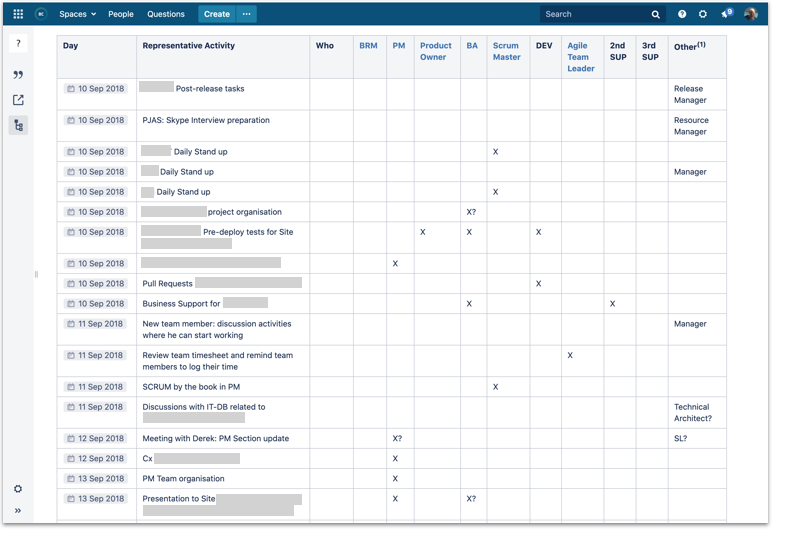
Anecdotes Workshops
Inviting team members to submit anecdotes about things that don’t go well in the old way of working. Running workshops to identify potential improvements.
Goal: Avoiding carrying over recurring flaws from the old organisation to the new one.
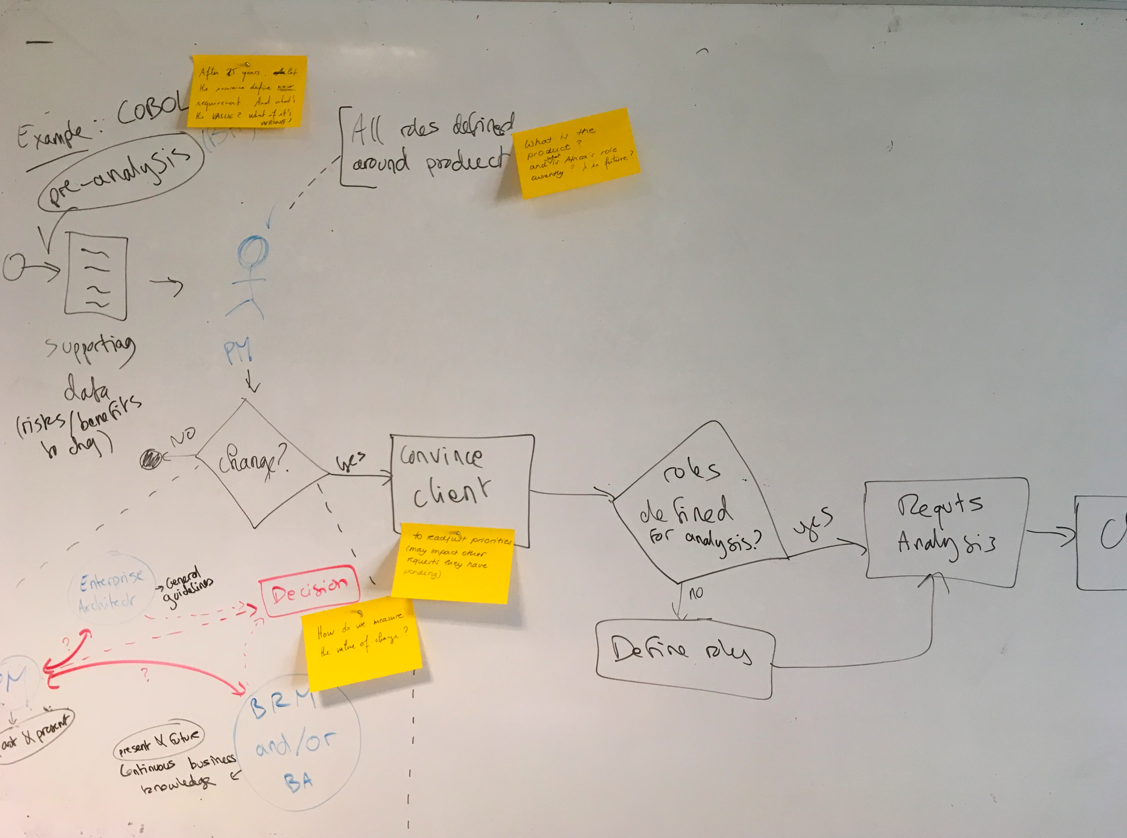
Feedback Focus Groups
Discussing the newly presented draft target operating model by organising 7 workshops with participants from various backgrounds. Processing comments in prioritisation workshop afterwards.
Goal: Assessing willingness to accept new operating model and collecting input for next iteration. Use employee’s input to adjust the model such that it suits their needs.
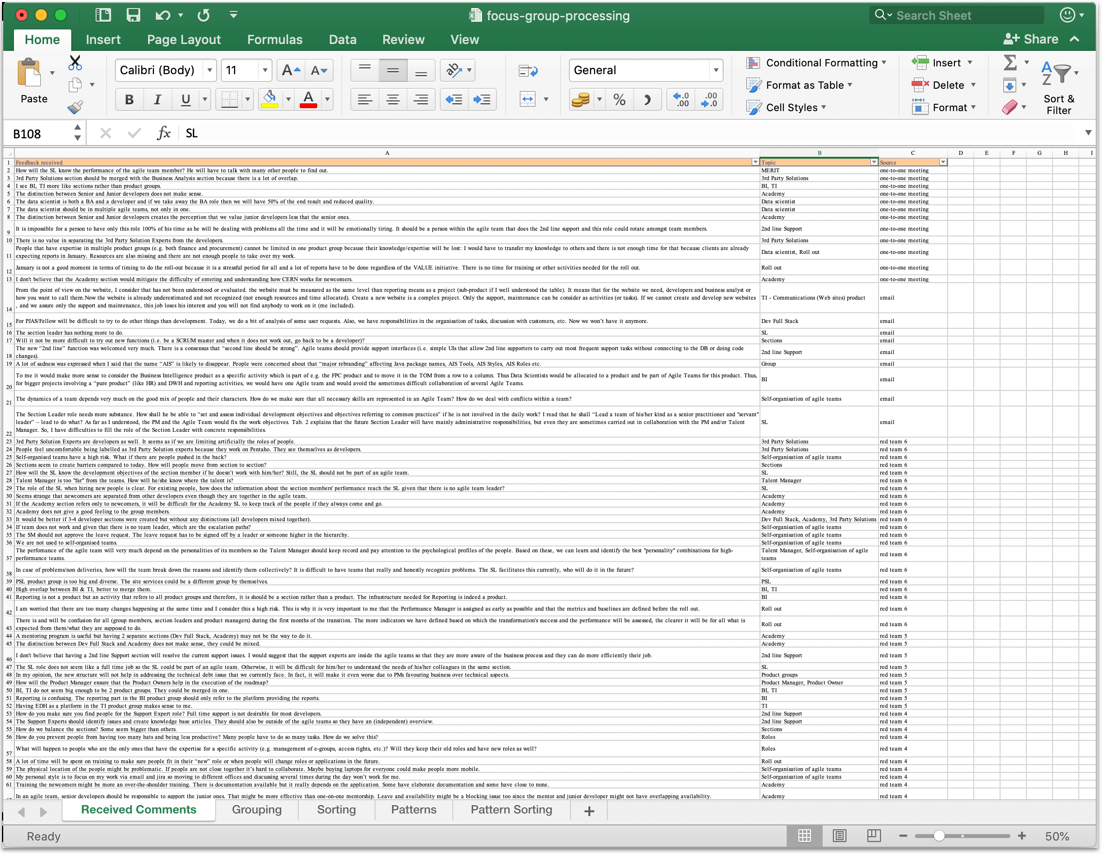
Periodic Employee Satisfaction Survey
Conducting one survey every two months, covering various aspects of culture, Agile and organisational change.
Goal: Monitoring change acceptance and employee satisfaction and identifying additional organisational, cultural or procedural improvements.
Motivation Survey
Conducting survey that asks what motivates and demotivates team members regarding topics like: feedback, mistakes, planning, and communication.
Goal: Identify quick wins and gather foundation for dedicated culture change phase.
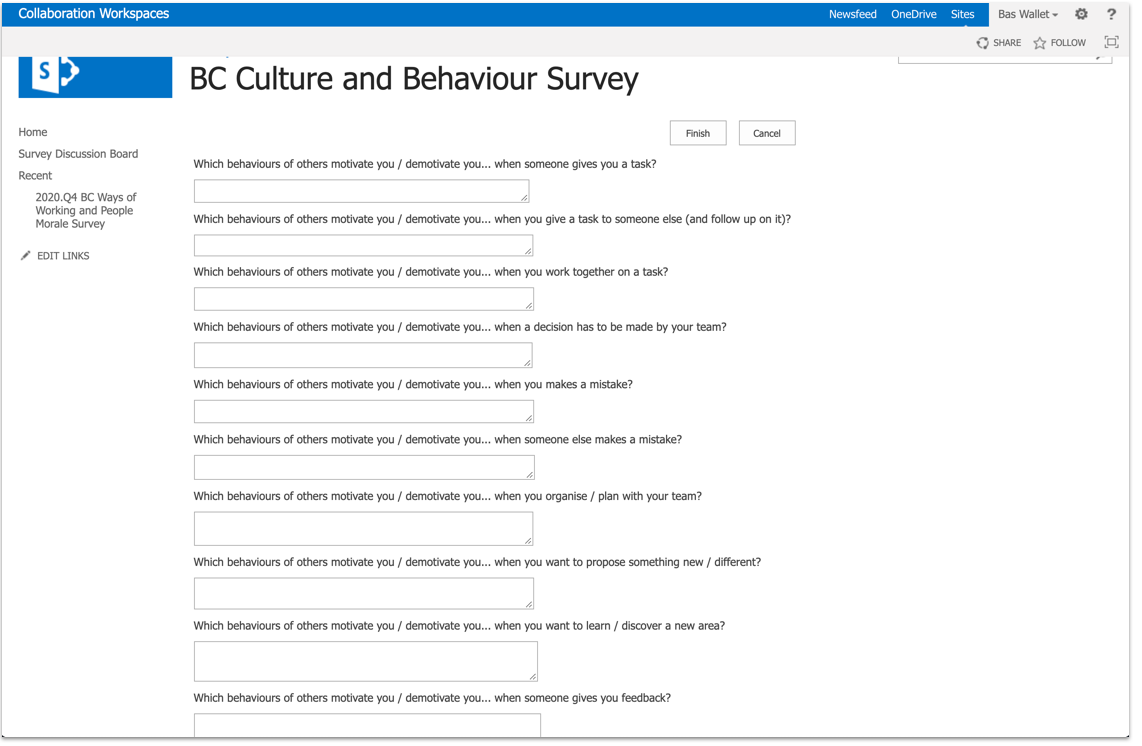
Motivation Poll
Sending out poll where employees can vote for most urgent cultural aspects to improve. The aspects come back from the initial text based motivation survey.
Goal: Defining priorities for upcoming motivation workshops.

Motivation Workshops
Running a number of workshops with development teams identify what accountability and trust means to them, and to brainstorm about cultural hacks that might facilitate improvement of trust in the organization.
Goal: Letting team members understand the importance of trust and giving them platform to share ideas regarding how to facilitate the change.
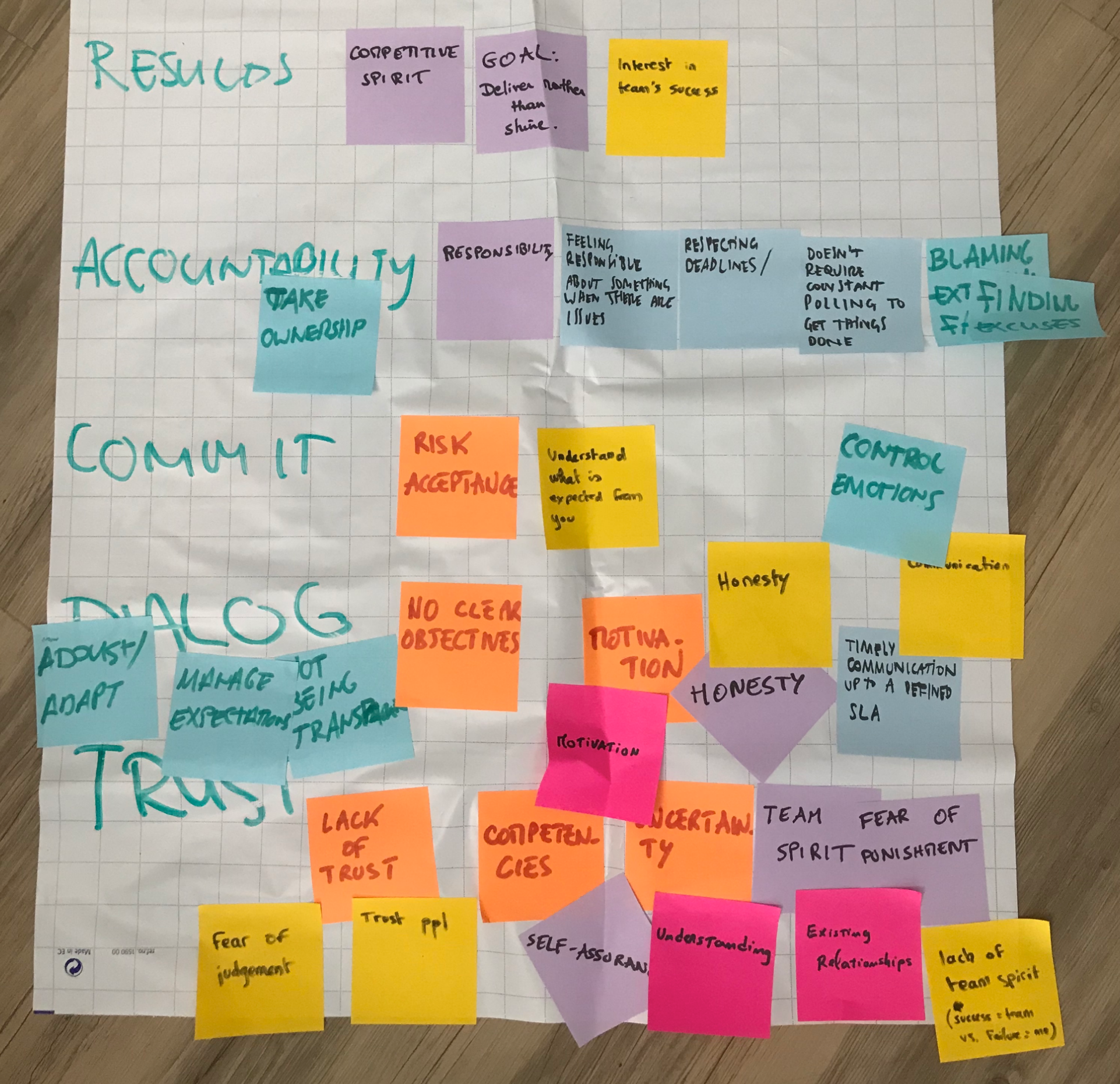
Culture Discussion
Presenting conducted research and culture hacks and facilitating discussions in dedicated meetings with all the Agile teams, product managers and supervisors. Asking all leaders to define cultural intentions that they can use to facilitate further change.
Goal: Creating awareness, fostering debate and showing how previous input has been used.
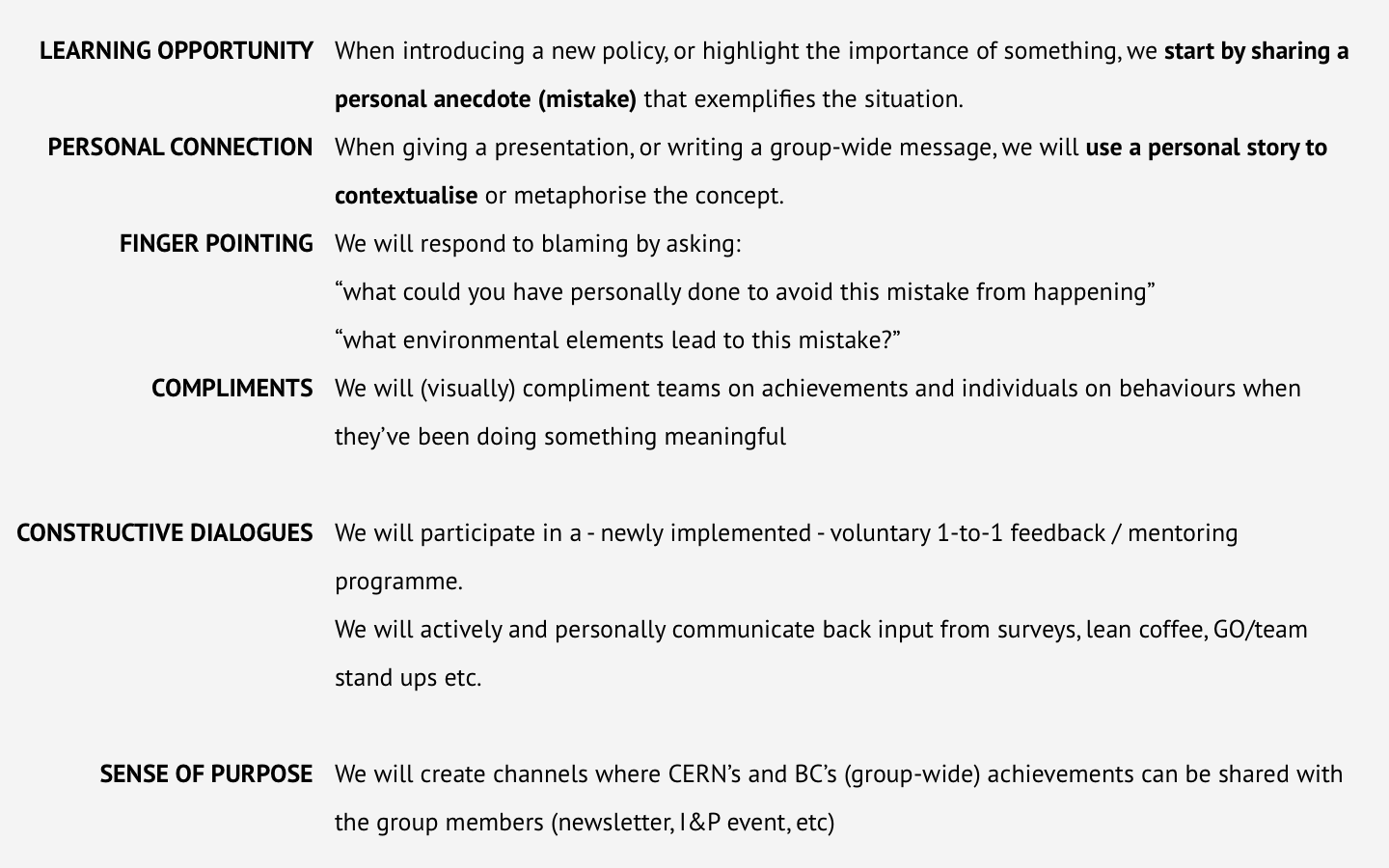
Recruitment Strategy Adjustment
Moving from technically centred recruitment to a balance between behavioural, cognitive and technical assessment. Providing a framework that fairly assesses candidates and creating awareness of the importance of cultural fit, personal traits and diversity.
Goal: Ensuring that new hires will be a cultural match and have the potential to grow into different roles.
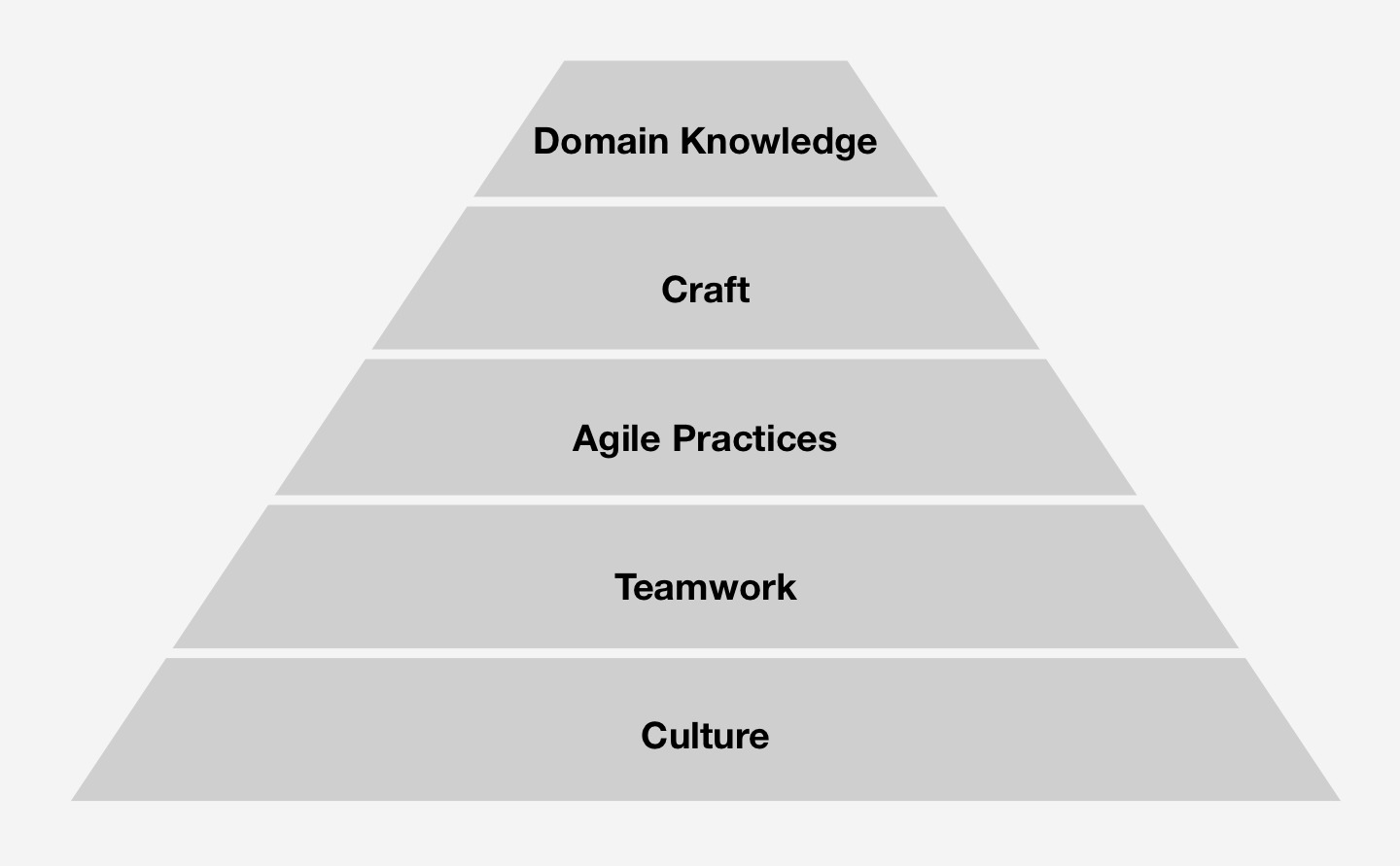
Newcomers surveys and exit interviews
Setting up a framework for newcomers surveys and exit interviews that can be carried out by supervisors.
Goal: Learning what the employee’s experience has been like, and what can be improved about it, how the onboarding process can be improved and how CERN differs from other organizations.
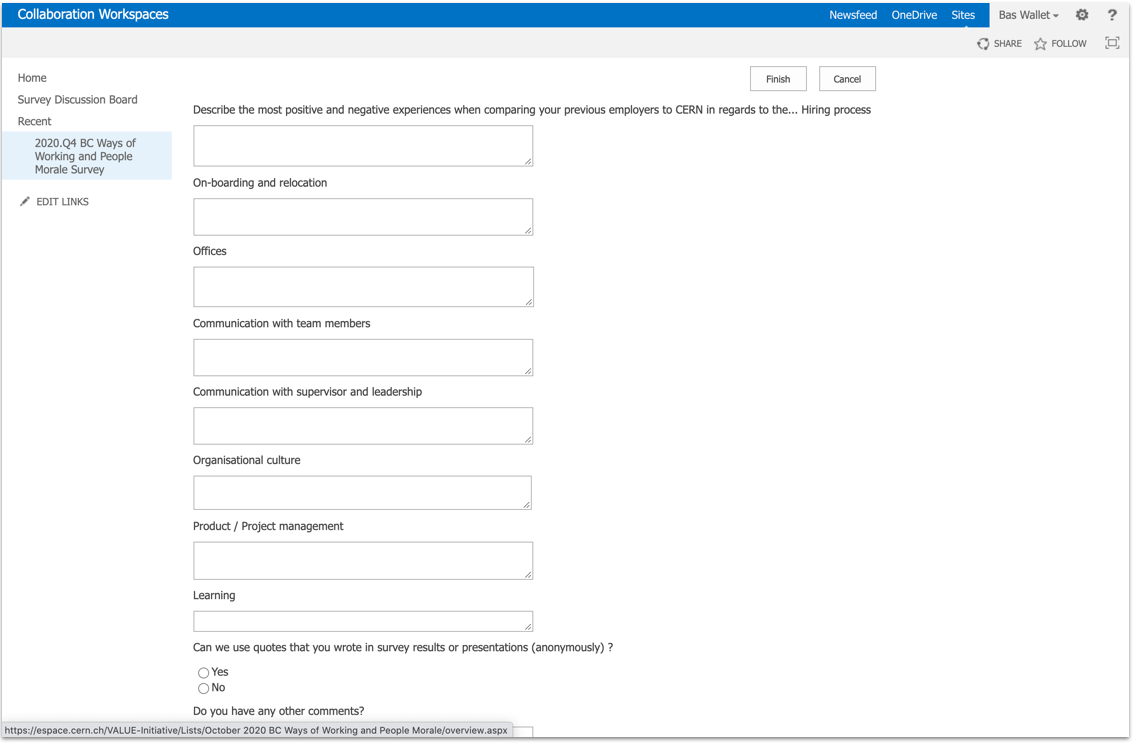
Maturity Matrices
Creating a structure that helps the technical leads and their team members define their growth path. Next to technical competencies, the matrix also covers Agile, cultural and communication maturity.
Goal: Facilitating guidance in career growth and job expectations.

Project Summary
Changing an organizational structure is relatively easy. Changing habits and beliefs is a lot harder. Involving everyone in the phase before the reorganisation reduced design flaws and created buy-in. However, it wasn’t enough to avoid a rough start. Increased communication between management and product teams, adapted recruitment processes and the culture work have supported the acceptance.
Award for Extraordinary Service
Received CERN's Award for Extraordinary Service for my contribution to the organizational change.